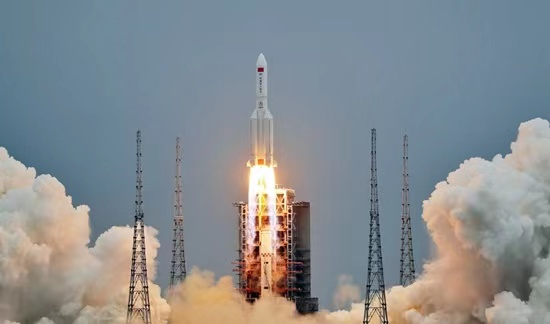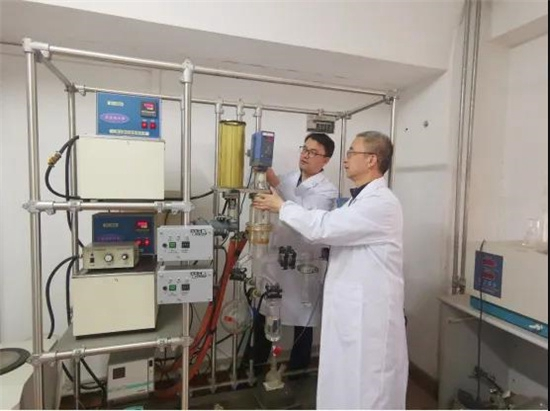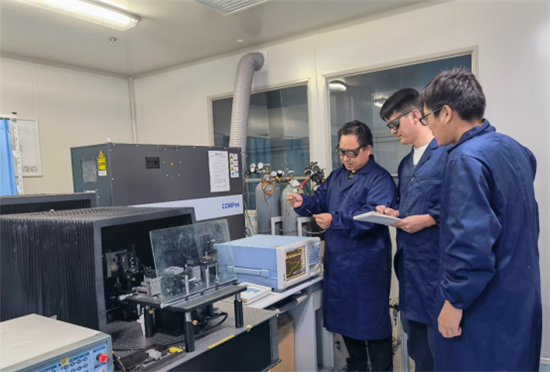China launched a Long March 5B rocket carrying the Tianhe space station's core module into orbit on April 28 at the Wenchang Space Launch Center in Hainan province.
Shandong University, a prestigious institution of higher education in Shandong province, has undertaken important tasks such as researching key materials for space seals and health monitoring of the core module of the space station, and contributing its wisdom to the smooth liftoff and effective operation of the spacecraft, said the university.

China launches the core capsule of its space station at the Wenchang Space Launch Center in Hainan province on April 29, 2021. [Photo by Guo Wenbin/provided to chinadaily.com.cn]
According to a researcher from the university, sealing is one of the key core technologies of a space station. Manned spaceflight seals have strict requirements for material properties: good adaptability to space environment that can meet the long-term in-orbit sealing requirements of the spacecraft; non-toxic and pollution-free, which will not cause adverse effects on the safety of astronauts and the operation of instruments and meters.

A research team at Shandong University [Photo/dzwww.com]
In 2016, Professor Zhou Chuanjian’s research group from the School of Materials Science and Engineering at Shandong University undertook the research on key raw materials of seals.
The performance of vacuum resistance, ultraviolet radiation resistance and charged particle resistance, space atomic oxygen resistance and space comprehensive environment resistance of phenyl silicone rubber material developed have reached the level of similar foreign products, and become an irreplaceable core material for preparing sealing parts.
The phenyl silicone rubber material developed by the team has vacuum resistance, ultraviolet radiation resistance and charged particle irradiation resistance, space atomic oxygen resistance and space comprehensive environment resistance.

Researchers perform an experiment at Shandong University [Photo/dzwww.com]
The measurement system jointly developed by Professor Jiang Mingshun's research group from the School of Control Science and Engineering at Shandong University and related units is a key equipment in the health monitoring system of the core module of the space station.
It can obtain mechanical parameters such as high and low frequency vibration and impact of each module during the ascent and in-orbit of the space station, monitor the structural health of each module, and provide in-orbit status diagnosis service of the space station.
Source: China Daily